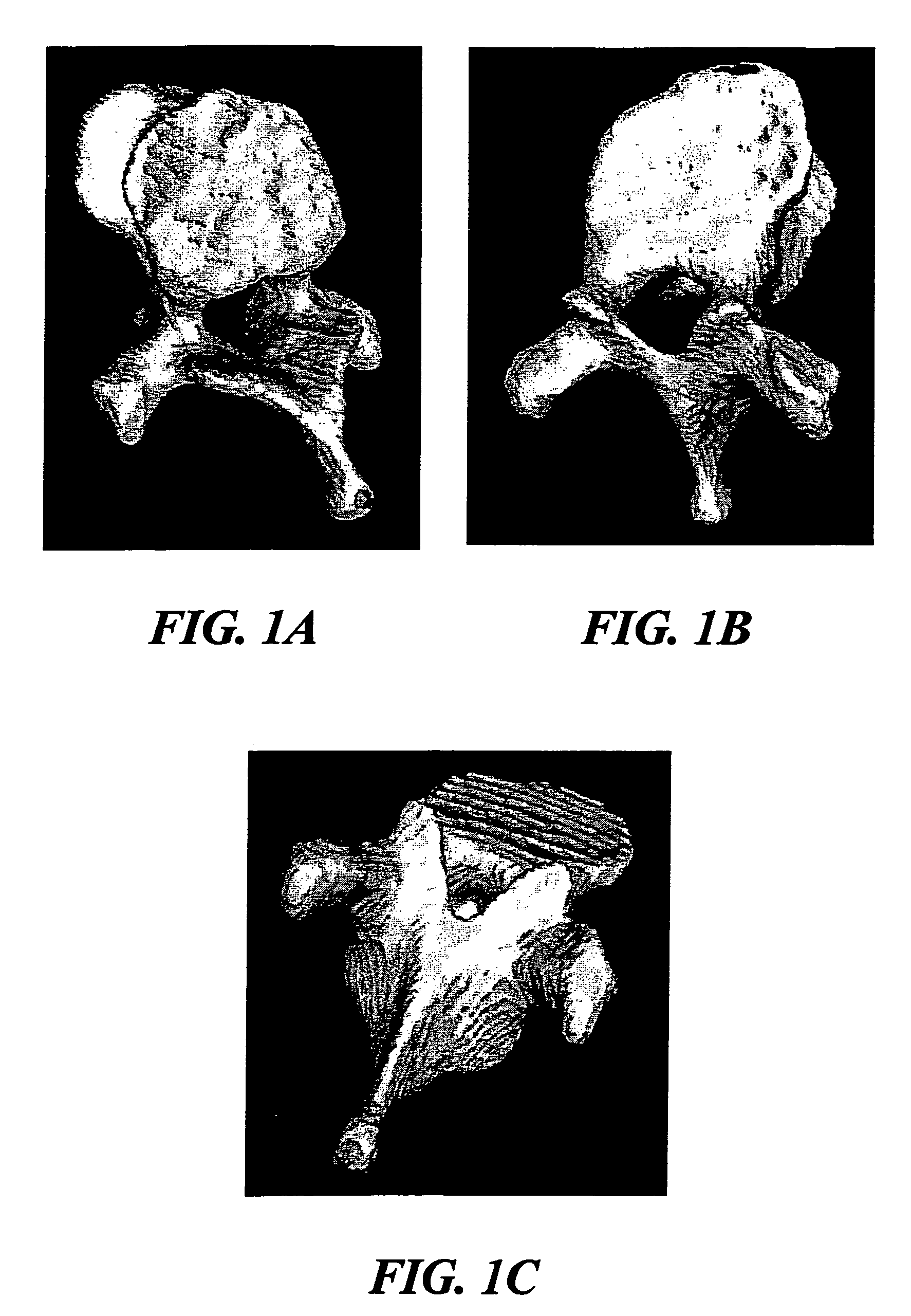Method of incorporating prior knowledge in level set segmentation of 3D complex structures
a complex structure and level set technology, applied in the field of anatomical object segmentation, can solve the problems of simple algorithms, inapplicability, edge-based methods, and leakage to neighboring objects, and achieve the effect of preventing local minima and reducing the power of pca methods
- Summary
- Abstract
- Description
- Claims
- Application Information
AI Technical Summary
Benefits of technology
Problems solved by technology
Method used
Image
Examples
Embodiment Construction
[0040]Referring now to FIGS. 1A-1C, a complex shape of a vertebra is shown in three-dimensional (3D) views. FIGS. 1D-1G show two-dimensional views of the vertebra on selected axial slices along with its neighboring vertebra and rib structures. The regions outlined by dotted line indicated by 10 belong to the neighboring vertebras and rib structures. From FIGS. 1D-1G it is noted that the complex structure of vertebra and complex spatial relationship with its neighboring structures form complex 3D image features. The processes described below will separate (i.e., segment) the vertebra from its neighboring vertebra and rib structures,
[0041]Prior knowledge of an anatomical object is used for level set segmentation. The prior knowledge is represented with a general shape template and explicit representation of high-level features, such as interface regions between neighboring objects and the object of interest, i.e., the object being segmented from the neighboring objects. The process ad...
PUM
 Login to View More
Login to View More Abstract
Description
Claims
Application Information
 Login to View More
Login to View More - R&D
- Intellectual Property
- Life Sciences
- Materials
- Tech Scout
- Unparalleled Data Quality
- Higher Quality Content
- 60% Fewer Hallucinations
Browse by: Latest US Patents, China's latest patents, Technical Efficacy Thesaurus, Application Domain, Technology Topic, Popular Technical Reports.
© 2025 PatSnap. All rights reserved.Legal|Privacy policy|Modern Slavery Act Transparency Statement|Sitemap|About US| Contact US: help@patsnap.com



